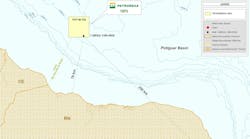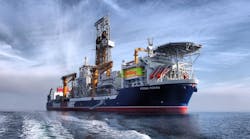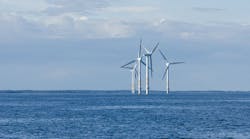Offshore staff
HOUSTON – Driven by an array of licensing and farm-in opportunities, plus an upsurge in exploration activity, Latin America’s upstream sector is poised for a banner year in 2018, according to analyst Wood Mackenzie.
Matt Blomerth, Head of Latin America Upstream Research at Wood Mackenzie, said: “Latin America is poised to be a global upstream leader in 2018. With a broad range of licensing and divestment opportunities expected in the year ahead, companies looking to invest in this attractive and lucrative region have a huge variety of entry opportunities.”
According to the analysis, the region's recent production ramp up will continue to gain momentum in 2018, driven by seven FPSO units deployed in Brazil and Argentina’s shale projects going into full development. Brazil’s major offshore projects, particularly in thepresalt, will continue to sustain the region’s production, while shale drilling in Argentina is expected to have a growing role, surpassing tight gas activity for the first time this year.
A leaner and more selective exploration industry has emerged over the past two years, according to the analyst. This year the region is expected to buck the global trend, with intense exploration activity expected in frontier basins in the Equatorial Margin, Brazil,Argentina, and Mexico.
“Latin America is firmly back on the radar for many of the E&Ps,” said Blomerth. “Last year, portfolio high-grading steered companies to deepwater licensing and M&A in the region and we anticipate that hot streak to continue in 2018. In the coming year we expect to see strong interest from Asian NOCs and majors in exploration blocks and DROs offered in Argentina, Brazil and Mexico. Ecuador may also get back in the game as the government seeks to replace service contracts with production-sharing contracts.”
Interest in Latin America's high-potential deepwater basins will continue in 2018, with licensing rounds in Brazil and Mexico expected to draw strong bidding from the majors and Asian NOCs. Although an expensive operating environment may keep independents away from Brazil, the analyst points out, these companies will look for lower-cost licensing opportunities in Mexico, Uruguay, and offshore Argentina.
The analysis highlights three opportunities that are attracting attention – Brazil's presalt licensing rounds and redevelopment of its mature Campos basin oil fields, and Argentina’s Vaca Muerta shale.
While US tight oil costs are rising and increasingly dense drilling raises questions about well deliverability, Latin America’s deepwater break-evens continue to decline. InBrazil’s giant Libra presalt field break-evens have seen reductions in recent years, from $52/bbl in 2014 to $45/bbl in 2017, with operators aiming to reach $35/bbl long term – on par with today’s average wellhead break-even price for some of the best shale plays.
Horacio Cuenca, Research Director for Latin America at Wood Mackenzie, added: “Sizeable reserves, project optimization, and good productivity have been driving deepwater costs down. In 2018, we expect already outstanding presalt well rates will reach new heights, driven by technological enhancements, further reducing well count and total cost.”
In Argentina, high-profile shale pilot wells in Vaca Muerta will give operators confidence to commit to take-or-pay contracts, allowing much needed infrastructure and pressure pumping capacity build-up. Moreover, the analyst adds that Argentina’s vast under-explored frontier offshore acreage will appeal to exploration-focused players, especially the majors as they look to complement their Vaca Muerta positions with offshore exposure.
Latin America’s upstream sector enters 2018 with strong momentum as recent investor-friendly regulatory changes have enticed operators back to the region. However, investors face some trepidation as highly uncertain presidential elections in Brazil, Mexico, Colombia, and Venezuela could slow the region’s pace of upstream development.
However, Argentina stands out as a pro-reform bright spot, the analysis notes. Following big victories for the incumbent administration in recent midterm elections, President Macri’s key focus is to move Argentina continuously toward a more investor-friendly environment.
“2018 will certainly be a transformative year for the region, both economically and politically,” said Cuenca. “Although there is some political uncertainty ahead, the immense exploration and development opportunities available in the region will keep optimism high.”
01/17/2018




